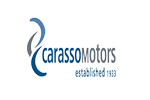If you think that work is your life – you might not be wrong. A recent survey done by the U.S. Bureau of Labor Statistics showed that in 2011 the average American worked or engaged in work relating activities 8.8 hours a day on average, 1.2 hours more than time spent sleeping (7.6 hours). That means that the average American spend over half of his waking hours working.
That stresses the importance of a healthy work environment, both for the benefit of the employee, as well as the employer. A healthy work environment means a healthier and well-adjusted employee – which in turn leads to higher production and thus, higher profits.
A healthy employee will take fewer sick days, and not only that – it will also affect his life outside of the office. With a decreased chance for office related injuries and illnesses relating to stress the overall morale of the employee will rise. Also, an employee that likes to come to work and knows that his employer will care for him, will be more motivated and synced with the organization, and that means better incentive management on your part.
Improving the wellness of the employee isn’t just a humanitarian cause to improve his quality of life. It also has “bottom-line” implications for the business such as reduced healthcare costs, higher production of a higher quality of work and lower turnover costs due to increased retention rates.
As an employer, it is important to engage and be active when it comes to the wellness of the employees. It doesn’t have to be through an elaborate plan that takes months to formulate and execute. There are changes that can be done instantly and will go a long way in improving the workplace. These changes include: emphasizing education through breaktime seminars; adding healthier snacking options like fruits and granola bars; encouraging activities that will help reduce the stress of the employees during the workday such as regularly scheduled breaks to take a walk, chat with coworkers or play a game in the break room.
While as a business owner and an employer it is easy to view these actions simply as “bottom-line” enhancers, their meaning and influence is far beyond that. It is also a way to remember that employees are people and not just a complex production machine, and the overall, a happier and healthier person is also a better employee. It’s a win-win situation for all.


























































